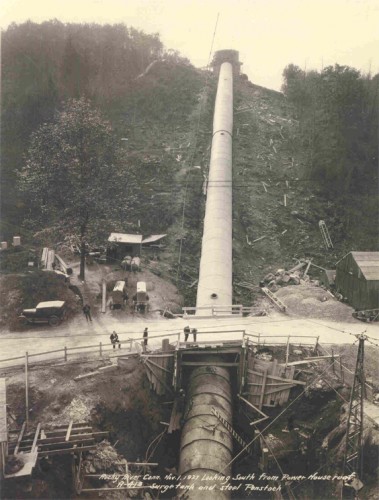On July 15, 1926, Connecticut Light & Power Company’s board of directors approved a plan to build a man-made reservoir in order to produce electric power. What would become Candlewood Lake was the first large-scale project in the United States to employ the concept of a pumped-water storage facility; basically, water from the Housatonic River was pumped up a 13-foot-diameter pipe and then held in a large reservoir. When needed, this water would flow back down into a turbine which produced the electricity. It took Connecticut Light & Power 26 months to complete the construction of Connecticut’s largest lake including the building of the dam and the flooding of the 5,420 acres of farmland, forests, and the small community of Jerusalem on land belonging to the towns of Brookfield, Danbury, New Fairfield, New Milford and Sherman. The project also required that 4,500 acres of woodland be hand cleared. Some of the 1,400 laborers on the project were housed in four temporary work camps built at the site.
In all, there were 35 families who owned property in the area to be flooded and to which Connecticut Light & Power held the right of eminent domain, under which private property can be taken for public use. Most of these families sold their property to the company but a few refused and some of the lake bed property is still privately owned. Approximately 100 buildings, including schools, houses, barns and churches were demolished or moved. Even gravestones were moved, as were remains that workers were paid $1 to exhume for reburial.
On February 25, 1928, water was first pumped into the valley and by September 29, 1928, the lake was officially complete at 429 feet above sea level. Candlewood Lake is 16 miles long, 3.2 miles wide with an average depth of 40 feet, and covers a surface area of 8.4 square miles or 5,400 acres.









